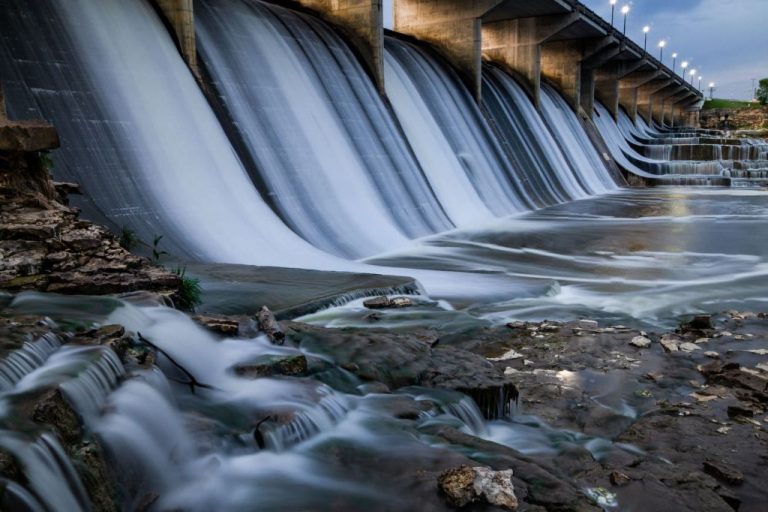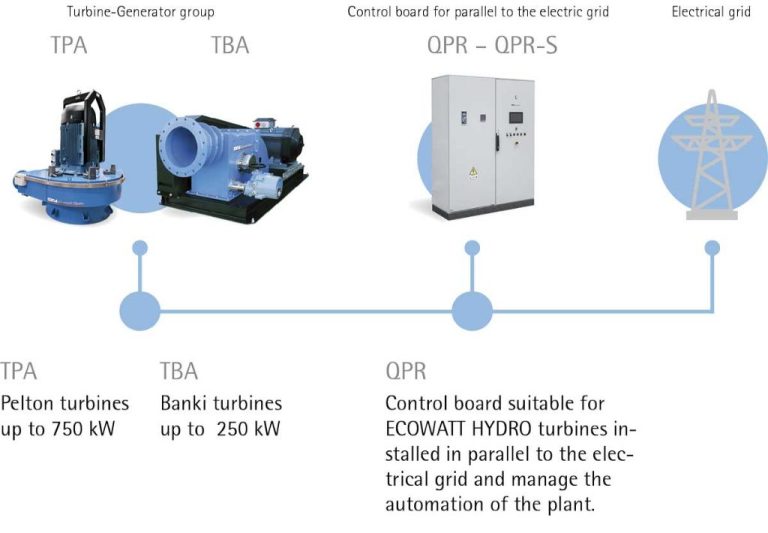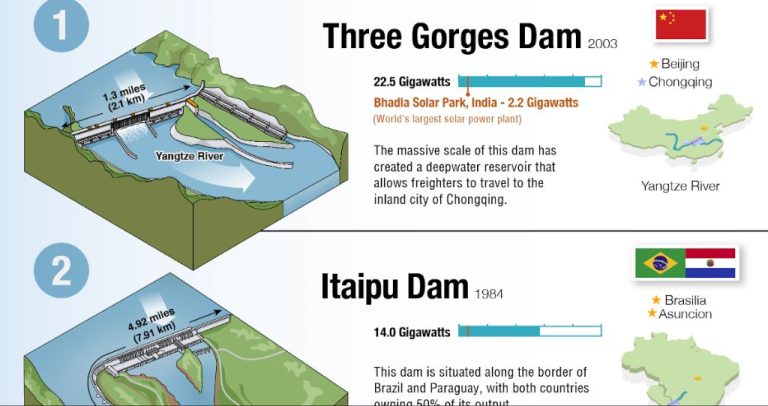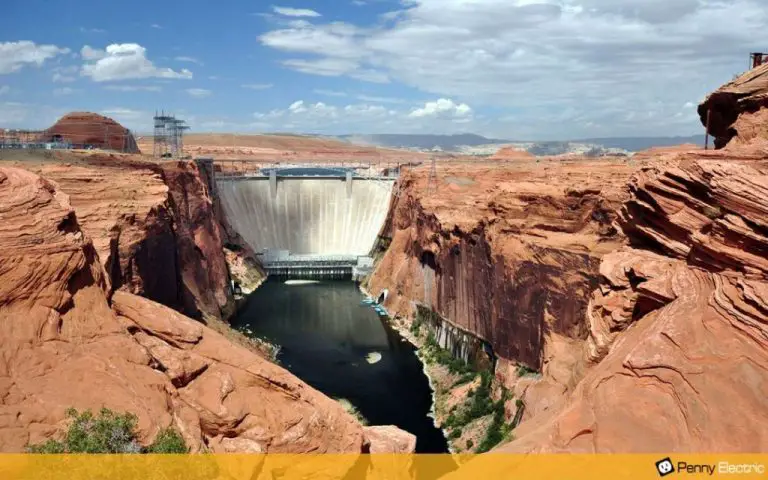Which Is India’S Largest Hydropower?
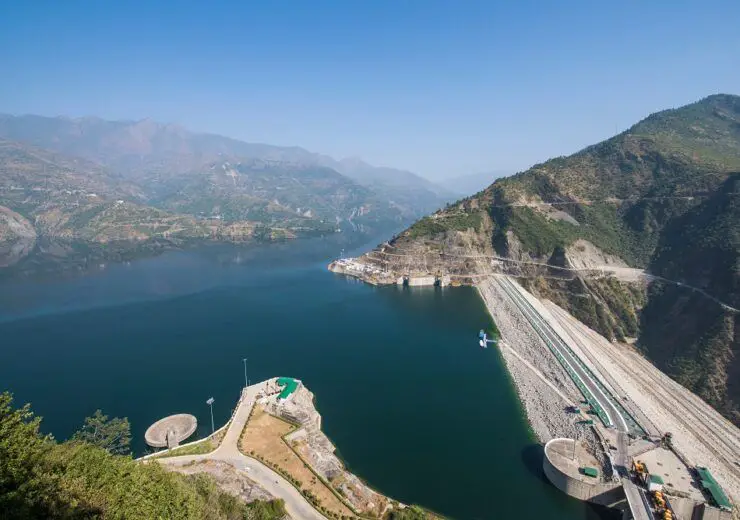
India has emerged as one of the leading countries in hydropower generation. With abundant water resources, hydropower plays a crucial role in meeting India’s electricity needs in an environmentally sustainable manner. Hydropower currently accounts for over 12% of India’s total power generation capacity and the country ranks 5th globally in terms of installed hydropower capacity.
Some of the largest hydropower projects in India boast massive generation capacities and advanced engineering. The top facilities each have over 1,000 MW of installed capacity and rank among the biggest dams in the world. These projects provide baseload power, peak load power, flood control, and irrigation benefits across various regions of the country. With new projects underway, hydropower is poised to continue growing as a renewable backbone of India’s electricity grid.
Tehri Dam
The Tehri Dam is located on the Bhagirathi River, which is a tributary of the Ganges River in Uttarakhand, India (https://en.wikipedia.org/wiki/Tehri_Dam). With a height of 260.5 meters, it is the tallest dam in India and one of the tallest dams in the world.
The Tehri Dam has a massive reservoir capacity of 2.0 million acre-feet. Its reservoir covers an area of 42 square km and extends 52 km upstream. Construction on the dam began in 1978, but it did not become fully operational until 2006.
The Tehri Dam was constructed for several purposes. Its primary purpose is hydroelectric power generation – its installed capacity is 1,000 MW. In addition, its reservoir provides irrigation water to nearby areas. The dam also provides drinking water and flood control benefits (https://thdc.co.in/en/content/tehri-dam-hppstage-i).
Bhakra Nangal Dam
The Bhakra Nangal Dam is located across the Sutlej River in Bilaspur, Himachal Pradesh. It is one of the highest gravity dams in the world, standing at 226 m (741 ft) high. Construction on the dam began in 1948 and was completed in 1963. The dam has a gross storage capacity of 9.34 billion cubic metres (BCM) and a live storage of 5.85 BCM. The main purpose of the dam is to store water for irrigation, provide hydroelectric power generation, and prevent flooding in the monsoon season 1.
The Bhakra Nangal multipurpose dam project is one of the biggest in India and was described by then Prime Minister Jawaharlal Nehru as the “temple of modern India”. The dam, along with the Beas Dam situated upstream, provides irrigation to 10 million acres of fields in Punjab, Haryana and Rajasthan 2. The Bhakra Nangal dam played a major role in transforming the drought-prone areas of North India into surplus food production areas.
Srisailam Dam
The Srisailam Dam is located across the Krishna River on the border of Mahabubnagar District, Telangana and Kurnool district, Andhra Pradesh [1]. With a height of 512 meters and a length of 470 meters, it is one of the largest masonry dams in the world [2].
Construction on the Srisailam Dam began in 1960 and was completed in 1981 after over 20 years of work. The primary purpose of the dam is hydroelectric power generation and it has an installed capacity of 900 MW from its right and left power houses [3]. The reservoir created by the dam has a gross storage capacity of 215 TMC ft. In addition to power generation, the dam supports irrigation in the surrounding areas.
The Srisailam Dam Project is named after Neelam Sanjiva Reddy, the former Chief Minister of Andhra Pradesh, and was inaugurated by Indira Gandhi in 1981. It is one of the largest hydroelectric projects in India and a major landmark on the Krishna River.
Nagarjuna Sagar Dam
Located on the Krishna River between the Palnadu district in Andhra Pradesh and the Nalgonda district in Telangana, the Nagarjuna Sagar Dam is one of the largest masonry dams in the world.
With 26 gates and a catchment area of 258,000 km2, the Nagarjuna Sagar has a massive storage capacity of 11.472 billion cubic meters. Construction on the dam began in 1955 and was completed in 1967. The primary purpose of the Nagarjuna Sagar Dam is irrigation and its reservoir supplies water to the Nalgonda, Guntur, and Prakasam districts.
The dam also generates hydroelectric power with a capacity of 815 MW from its right and left power houses. In addition to irrigation and power generation, the reservoir created by the Nagarjuna Sagar Dam provides flood control for the downstream regions.
Indira Sagar Dam
The Indira Sagar Dam is located on the Narmada River in Mandla district of Madhya Pradesh (https://en.wikipedia.org/wiki/Indirasagar_Dam). It is the largest dam in India in terms of water storage capacity.
The dam has a total reservoir capacity of 12.22 billion cubic meters, with a live capacity of 9.75 billion cubic meters (https://indiawris.gov.in/wiki/doku.php?id=indira_sagar_narmada_sagar_project_major_irrigation_project_ji00836). The dam stands at 92 meters high and 653 meters long.
Construction on the Indira Sagar Dam began in 1984 and was completed in 2005. The main purpose of the dam is hydroelectric power generation and irrigation. It has an installed capacity of 1000 MW and provides drinking water and irrigation facilities to around 1.5 million hectares of agricultural land.
Sardar Sarovar Dam
The Sardar Sarovar Dam is located on the Narmada River in Gujarat, India. With a height of 163 meters, it is one of the largest dams in the country and the largest of the 30 dams planned as part of the Narmada Valley Project (Source: https://en.wikipedia.org/wiki/Sardar_Sarovar_Dam).
The Sardar Sarovar Dam has a total capacity of 1.2 million cubic meters and an active capacity of 0.9 million cubic meters (Source: https://www.sardarsarovardam.org/dam-reservoir.aspx). Its catchment area spreads over 31,000 sq km.
Construction on the Sardar Sarovar Dam began in 1987 and the dam was inaugurated in 2017 by Prime Minister Narendra Modi after almost 30 years of construction (Source: https://sardarsarovardam.org/features-of-project.aspx).
The main purpose of the Sardar Sarovar Dam is to provide irrigation, drinking water and produce hydroelectric power to the states of Gujarat, Madhya Pradesh and Maharashtra.
Hirakud Dam
The Hirakud Dam is located across the Mahanadi River in Sambalpur district in the state of Odisha in India (https://en.wikipedia.org/wiki/Hirakud_Dam). With a length of 25.8 km, including the dykes stretching across, it is one of the longest dams in the world. The purpose of the dam is flood control and irrigation.
The Hirakud Dam has a reservoir capacity of 7.944 km3 and a surface area of over 259 km2 at full reservoir level. The dam’s power facilities have an installed capacity of 307.5 MW. Construction on the Hirakud Dam began in 1948 and was completed in 1957 (https://www.sambalpuronline.in/city-guide/hirakud-dam).
The dam was built to control floods in the Mahanadi River Delta and to generate hydroelectricity. It also provides irrigation water to over 7,500 km2 of land in the Mahanadi River Delta.
Indravati Dam
The Indravati Dam is located across the Indravati River, a tributary of the Godavari River, in the Kalahandi district of Odisha, India. It is situated about 90 km from Bhawanipatna.[1]
This gravity dam has a height of 685 m and a length of 492 m. Its reservoir has a total capacity of 2771.50 million m3. The dam’s power station has a generation capacity of 600 MW.[2]
Construction on the Indravati Dam began in 1978 and was completed in 1997. The main purpose of the dam is hydroelectric power generation and irrigation. It provides water for irrigation of 155,000 hectares of land in the Kalahandi district.
Conclusion
In summary, hydropower plays a crucial role in India’s energy mix and will continue to do so in the future. Some of the largest hydropower projects in India include the Tehri Dam, Bhakra Nangal Dam, Srisailam Dam, Nagarjuna Sagar Dam, Indira Sagar Dam, Sardar Sarovar Dam, Hirakud Dam, and Indravati Dam. These massive projects generate thousands of megawatts of clean, renewable electricity to power homes, businesses, and industries across the country.
According to sources, hydropower currently contributes around 13% of India’s total installed electricity generation capacity. The government has set ambitious targets to nearly double India’s hydropower capacity to around 150 gigawatts by 2030. This is part of India’s larger goal to dramatically increase the share of renewable energy in its overall energy mix to fight climate change and reduce dependence on imported fossil fuels.
Hydropower will continue to be a foundational component of India’s renewable energy strategy going forward due to its status as a firm, flexible and low-cost source of power. With the proper environmental safeguards and resettlement policies in place, hydropower can provide immense benefits as a clean, domestic and sustainable energy source for India’s growing population and development needs.

